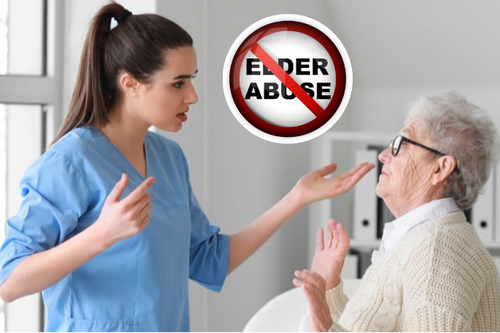MedicalResearch.com Interview with:
Kirsten Williams, M.D.
Blood and marrow transplant specialist
Children’s National Health System
MedicalResearch.com: What is the background for this study? What are the main findings?
Response: This study addressed a life-threatening complication of bone marrow transplantation called bone marrow failure. Bone marrow transplantation has provided a cure for patients with aggressive leukemias or acquired or genetic marrow dysfunction. The process of bone marrow transplantation involves giving chemotherapy and/or radiation, which removes the diseased blood cells from the bone marrow. After this, new bone marrow stem cells are infused from a healthy individual. They travel to the bone marrow and start the slow process of remaking the blood system. Because these new cells start from infancy, it takes upwards of four to five weeks for new mature healthy cells to emerge into the blood, where they can be identified. Historically, there has been no timely way to determine if the new cells have successfully repopulated unless they can be seen in the blood compartment. This condition of bone marrow failure is life-threatening, because patients don't have white blood cells to protect them from infection. Once bone marrow failure is diagnosed, a second new set of stem cells are infused, often after more chemotherapy is given. However, for many individuals this re-transplantation is too late, because severe infections can be fatal while waiting cells to recover.
We were the first group to use a new imaging test to understand how the newly infused bone marrow cells develop inside the patient. We have recently published a way to detect the new bone marrow cell growth as early as five days after the cells are given. We used an investigational nuclear medicine test to reveal this early cell growth, which could be detected weeks before the cells appear in the blood. This radiology test is safe, does not cause any problems and is not invasive. It is called FLT (
18F-fluorothymidine) and the contrast is taken up by dividing hematopoietic stem cells. The patients could even see the growth of their new cells inside the bone marrow (which they very much enjoyed while waiting to see recovery of the cells in their blood). We could use the brightness of the image (called SUV) to determine approximately how many weeks remained before the cells were visible in the blood.
Finally, we actually could see where the new cells went after they were infused, tracking their settling in various organs and bones. Through this, we could see that cells did not travel directly to all of the bones right away as was previously thought, but rather first went to the liver and spleen, then to the mid-spine (thorax), then to the remainder of the spine and breastplate, and finally to the arms and legs. This pattern of bone marrow development is seen in healthy developing fetuses. In this case, it occurs in a similar pattern in adults undergoing bone marrow transplant.
(more…)












 Barbara Chaiyachati, MD PhD
SafePlace: The Center for Child Protection and Health
Division of General Pediatrics
The Children’s Hospital of Philadelphia,
Center for Pediatric Clinical Effectiveness
University of Pennsylvania
Philadelphia, Pennsylvania
MedicalResearch.com: What is the background for this study? What are the main findings?
Response: Children in foster care have high rates of medical problems including chronic diseases. There is less known about the differences in mortality for children in foster care.
Looking at national data from 2003 to 2016, this study finds that children (ages 1 to 18) in foster care have higher mortality compared to children in the general population and that the difference in mortality has increased over time.
Barbara Chaiyachati, MD PhD
SafePlace: The Center for Child Protection and Health
Division of General Pediatrics
The Children’s Hospital of Philadelphia,
Center for Pediatric Clinical Effectiveness
University of Pennsylvania
Philadelphia, Pennsylvania
MedicalResearch.com: What is the background for this study? What are the main findings?
Response: Children in foster care have high rates of medical problems including chronic diseases. There is less known about the differences in mortality for children in foster care.
Looking at national data from 2003 to 2016, this study finds that children (ages 1 to 18) in foster care have higher mortality compared to children in the general population and that the difference in mortality has increased over time. 













 Naoto Tada Ueno, M.D., Ph.D., F.A.C.P.
Executive Director, Morgan Welch Inflammatory Breast Cancer Research Program and Clinic
Section Chief, Section of Translational Breast Cancer Research, Department of Breast Medical Oncology
Division of Cancer Medicine
The University of Texas MD Anderson Cancer Center
Houston, TX
MedicalResearch.com: What is the background for this study? What are the main findings?
Response: The best outcome of inflammatory breast cancer (IBC) is dependent on achieving a pathological completed response after neoadjuvant chemotherapy for primary inflammatory breast cancer, which is the most aggressive type of breast cancer.
We have conducted extensive preclinical work, which showed that EGFR is a potential therapeutic targets of IBC.
Based on this preclinical data, we have conducted a phase II study to determine the pathological complete response rate of panitumumab plus neoadjuvant chemotherapy for HER2 negative primary inflammatory breast cancer.
Naoto Tada Ueno, M.D., Ph.D., F.A.C.P.
Executive Director, Morgan Welch Inflammatory Breast Cancer Research Program and Clinic
Section Chief, Section of Translational Breast Cancer Research, Department of Breast Medical Oncology
Division of Cancer Medicine
The University of Texas MD Anderson Cancer Center
Houston, TX
MedicalResearch.com: What is the background for this study? What are the main findings?
Response: The best outcome of inflammatory breast cancer (IBC) is dependent on achieving a pathological completed response after neoadjuvant chemotherapy for primary inflammatory breast cancer, which is the most aggressive type of breast cancer.
We have conducted extensive preclinical work, which showed that EGFR is a potential therapeutic targets of IBC.
Based on this preclinical data, we have conducted a phase II study to determine the pathological complete response rate of panitumumab plus neoadjuvant chemotherapy for HER2 negative primary inflammatory breast cancer. 